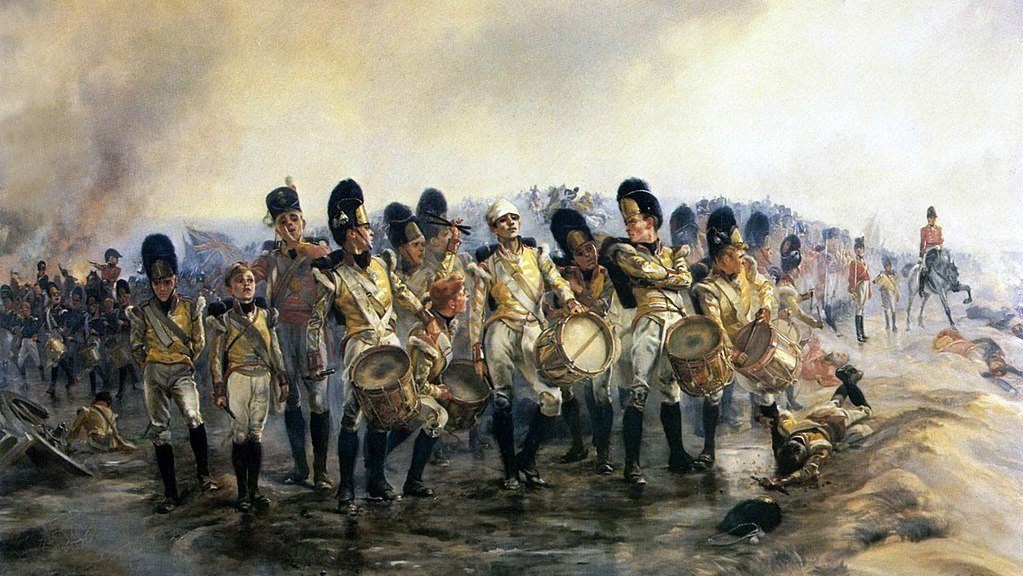Franz Joseph Haydn’s twelve “London” Symphonies (Nos. 93-104) arrived at a thrilling moment in music history.
It was the early 1790s, and the tumultuous effects of the American and French Revolutions were rippling through society. London’s Hanover Square Rooms reflected the birth of the modern public concert hall, and gave “architectural expression to the growing and powerful sacralization of music.” (Blanning, The Triumph of Music)
After 30 happy years in the employment of the Hungarian aristocratic court of Prince Nikolaus Esterházy, Haydn was lured to the glittering English capital by the prominent impresario, Johann Peter Salomon. The nearly 60-year-old composer quickly achieved rock star status. At one Haydn concert in 1792, 1,500 patrons packed into a hall which typically accommodated 800. Shedding courtly elegance in favor of a new dramatic punch, Haydn’s symphonies became bigger and louder, anticipating the revolutionary sounds of Beethoven. (For reference, Beethoven’s First Symphony was premiered in 1800).
Haydn’s Symphony No. 103 in E-flat Major, later nicknamed the “Drumroll,” was first performed on March 2, 1795 at the King’s Theatre. A review in The Morning Chronicle gives us a sense of the giddy excitement and anticipation which surrounded each new Haydn symphony:
Another new Overture [i.e., symphony], by the fertile and enchanting Haydn, was performed; which, as usual, had continual strokes of genius, both in air and harmony. The Introduction excited deepest attention, the Allegro charmed, the Andante was encored, the Minuets, especially the trio, were playful and sweet, and the last movement was equal, if not superior to the preceding.
The first movement’s introduction (Adagio) begins with a dramatic timpani roll, which earns the Symphony its nickname. This solemn and stunning call-to-order is followed by a single mysterious wandering melodic line, heard in the bassoons and low strings. The first five notes outline the Dies irae (“Day of Wrath”), the 13th century Gregorian chant which is part of the Latin Mass for the Dead. Foreshadowing the opening of Beethoven’s First Symphony, the 39 measures of this introduction are filled with cloudy harmonic and metric ambiguity. Rather than provide the usual stately assurance, Haydn instead drops us in the middle of a dense, dark forest.
Suddenly, the music reaches familiar territory with the arrival of the exposition (Allegro con spirito). Shifting to a buoyantly dancing 6/8 time, it is jubilant and celebratory. Still, fleeting motivic fragments of the mysterious introduction haunt the music as recurring ghosts. The Dies irae lurks just beneath the surface. In the development section, following a dramatic pause, it makes an obvious reappearance (5:18), accompanied by shivering lines in the violins. Before the movement ends, the drumroll and the low, slithering lines are heard again.
The second movement (Andante più tosto allegretto) is a set of double variations on two themes, both of which are derived from Croatian folk melodies. The first theme tiptoes forward sneakily in a veiled C minor, while the second theme takes a sudden, spirited turn to C major. The Italian virtuoso violinist Giovanni Battista Viotti, praised for his singing, full-bodied tone, served as concertmaster at the Symphony’s premiere. In one of the movement’s variations, the solo violin weaves an extended and ornamented obligato. The variation which follows takes the form of a rousing military march, punctuated by trumpet fanfares and drumrolls. The coda section brings a sudden turn to the Symphony’s home key of E-flat major. Just as the music seems to be drifting into serene repose, a jolting modulation reaffirms the Symphony’s home key of E-flat major.
With a heavy emphasis on downbeats, the Minuet takes the form of a foot-stomping Austrian rustic dance. As it unfolds, the music becomes increasingly adventurous, with the development of small motivic seeds. At times, the momentum is interrupted by a humorous retort, played by the bassoon and horn, which is answered by the flute and oboe. Flowing lines in the trio section blend the clarinet and violins.
The final movement (Allegro con spirito) is an exhilarating contrapuntal tour de force. Its opening bars give us the sense of music composing itself in real time. First, we hear a horn call, followed by a pause. When the horn call begins again, it becomes the countersubject of a new theme in the violins. This theme is based on the Croatian folk melody, Divojčica potok gazi (“A little girl treads on a brook”). Out of these simple and compact musical building blocks, a miraculous musical drama springs to life. It is music filled with a dizzying array of conversing voices, surprise twists and turns, and a jarring momentary displacement of the downbeat (2:39). The opening horn fifths ring out in the coda as the Symphony reaches its exalted and celebratory conclusion.
I. Adagio – Allegro con spirito:
II. Andante più tosto allegretto:
III. Menuet – Trio:
IV. Finale. Allegro con spirito:
Five Great Recordings
- Haydn: Symphony No. 103 in E-Flat Major, Hob. I:103 “Drumroll,” Sir Charles Mackerras, Orchestra of St. Luke’s Amazon
- Paavo Järvi and Deutsche Kammerphilharmonie Bremen
- Frans Brüggen and the Orchestra of the 18th Century
- Antal Doráti and Philharmonia Hungarica
- Claudio Abbado and the Chamber Orchestra of Europe
Featured Image: “Steady The Drums and Fifes! Ready to sound the advance” (1897), Elizabeth Thompson

